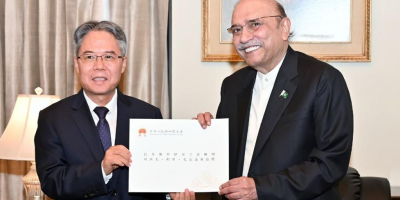Coordinated regional development injects strong impetus into China’s high-quality development

By Gong Ming, Zhao Yipu, People’s Daily
China has steadily advanced major regional strategies and laid a solid foundation for coordinated regional development over the past 10 years of the new era, injecting magnificent strength into Chinese modernization and offering experiences and opportunities of common development for other countries in the world.
Over the past decade, the Beijing-Tianjin-Hebei region, the Yangtze River Delta region and the Guangdong-Hong Kong-Macao Greater Bay Area (GBA) have become an increasingly important driving force of China’s high-quality development; the Yangtze River and the Yellow River have embraced a green development path in prioritizing ecological conservation; the development gap between China’s east and west has been constantly narrowed, with key functional zones playing more important roles; urban and rural areas have reinforced each other in development and people’s wellbeing has been continuously enhanced.
Adhering to mutual complementarity and mutual benefit, China has achieved fruitful results in coordinated regional development.
Oh Ei Sun, principal adviser for the Pacific Research Center of Malaysia, noted that China is working to develop a regional economic layout and a territorial space system that complement each other’s strengths and promote high-quality development.
Under a series of major regional strategies, the advantages of regions and cities across the country have been brought into full play, the expert said. He believes China has found a development model that suits its national conditions and achieved remarkable accomplishments, which couldn’t have been realized without science-based decision-making by the Communist Party of China.
Today, it takes only 50 minutes to go from Beijing to the Xiong’an New Area in north China’s Hebei province by a Fuxing bullet train, which is designed to relieve Beijing of functions non-essential to its role as the national capital and advance the coordinated development of the Beijing-Tianjin-Hebei region.
Starting from scratch, the Xiong’an New Area has been built into an emerging sophisticated modern city within a mere six years, which is a development miracle. It is expected to further grow as a development hub for Beijing-Tianjin-Hebei integration and a model for undertaking high-quality development.
Paul Frimpong, executive director of the Africa-China Center for Policy and Advisory, a Ghana-based think tank, said the Xiong’an New Area has been designed from planning to deeply promote the coordinated development of the Beijing-Tianjin-Hebei region and will be built into a high ground of expanding opening up and a new platform for foreign cooperation.
Frimpong said astonishing changes have taken place in the new area over the past six years with major progress made in infrastructure, and the China (Hebei) Pilot Free Trade Zone has been established. These have laid a foundation for the area to attract highly skilled talents from Beijing, Tianjin and elsewhere, the Ghanaian expert said, calling the progress of Xiong’an a model for promoting high-quality development.
Tang Zhimin, director of the China-ASEAN Studies at the Bangkok-based Panyapiwat Institute of Management, keeps a close eye on the construction of the GBA, believing the open and innovative area enjoys bright development prospects.
With Hong Kong, Macao, Guangzhou and Shenzhen serving as the core engines of regional development, the GBA will drive the development of surrounding cities and be built into a strategic propeller of the new development pattern, a demonstration zone of high-quality development, and a leading area of Chinese modernization, Tang said.
China, following coordinated regional development, has witnessed constantly enhanced vitality in its overall development, said Francesco Maringio, president of the Italy-China Association for the Promotion of the Silk Road, who has just visited China’s Anhui and Jiangsu provinces and been impressed by the high-quality development there.
He said many Chinese cities have built featured industrial clusters, including high-tech industries. “In Anhui province, where I have paid multiple visits, sci-tech innovation is developing rapidly with fruitful results,” he noted.
Maringio said the regional development gap in China is gradually narrowed, and some star enterprises in central and western parts of the country are growing, which is closely related to the country’s strategy to advance coordinated regional development.
Regions in China have clear plans of development, and they coordinate and cooperate with each other for mutual complementarity and common development, Maringio told People’s Daily.
Abdulaziz Alshaabani, an expert on China from Saudi Arabia, is a witness to China’s efforts to strengthen mutual complementarity and promote coordinated regional development during his study in China.
He said China pays high attention to the promotion of economic development in less-developed areas, and thus steps toward common prosperity for all.
The collaboration between southeast China’s Fujian province and Ningxia Hui autonomous region, a less-developed provincial-level region in northwest China, is an example of China’s coordinated regional development, he added.
“The capital, technologies, talents and development philosophies from the developed eastern region have been sent to the west, and thus win-win results are realized,” the expert noted.
Related News

Chinese Ambassador Calls on President Asif Ali Zardari
ISLAMABAD: The Ambassador of China to Pakistan, Mr. Jiang Zaidong, presents a birthday message fromRead More

Indonesian Defence Minister Calls on Prime Minister Shehbaz Sharif
DNA ISLAMABAD: Prime Minister Muhammad Shehbaz Sharif met today with the Defence Minister of Indonesia,Read More


Comments are Closed